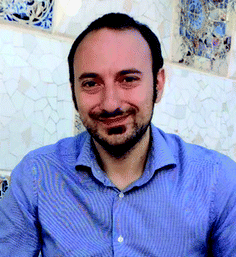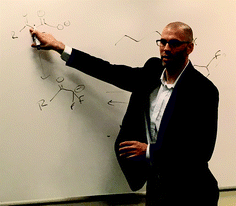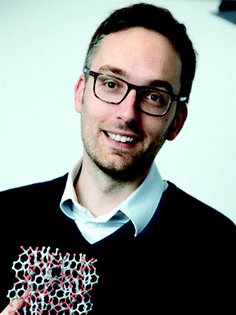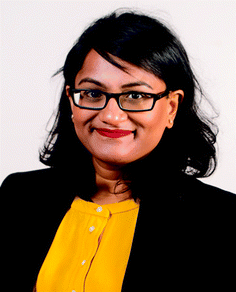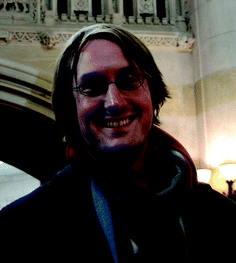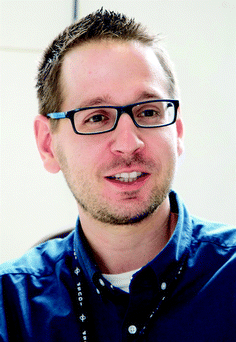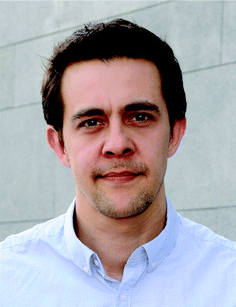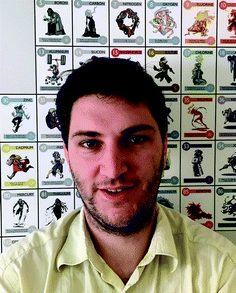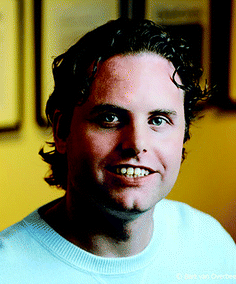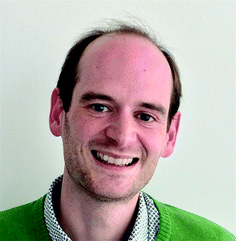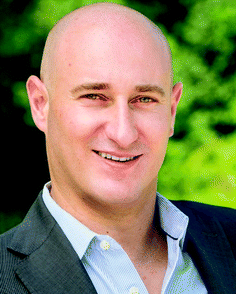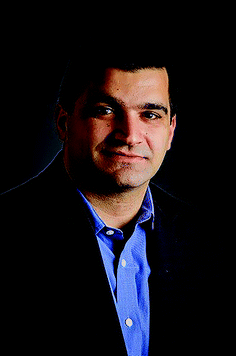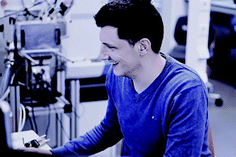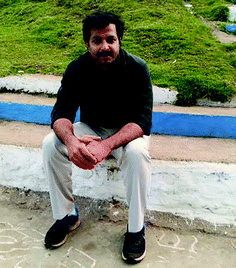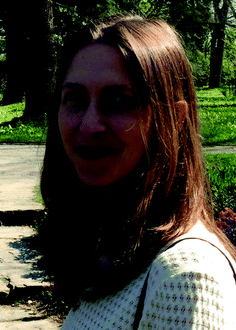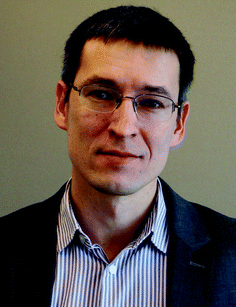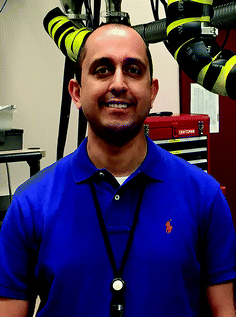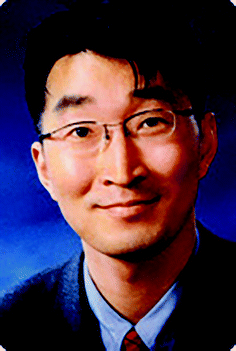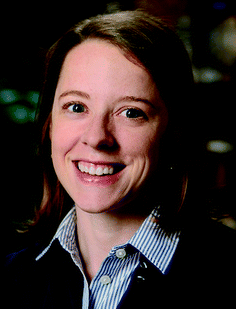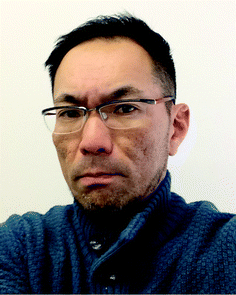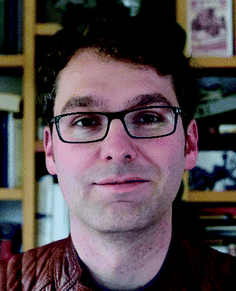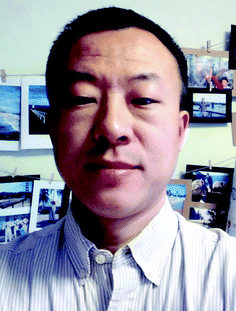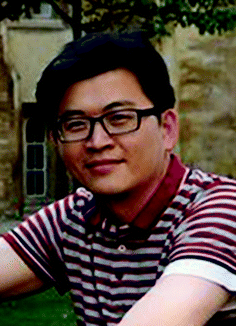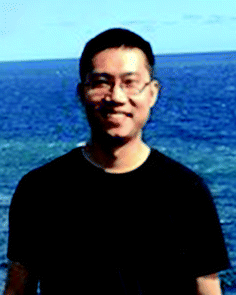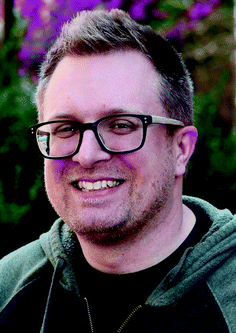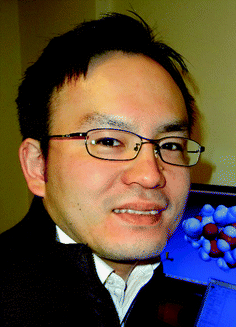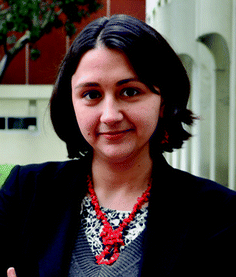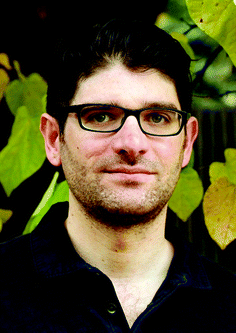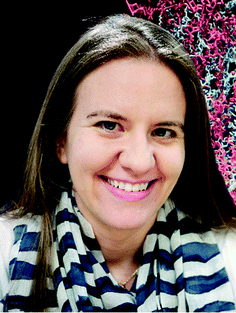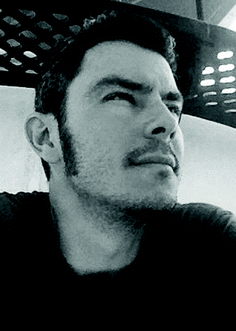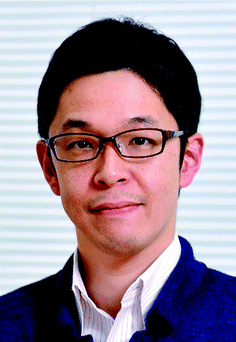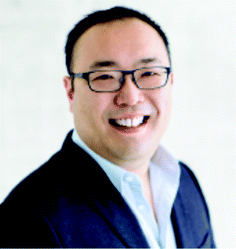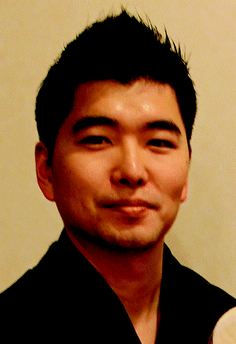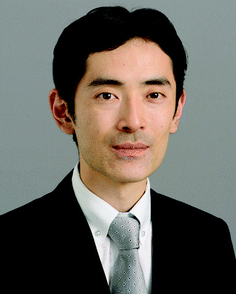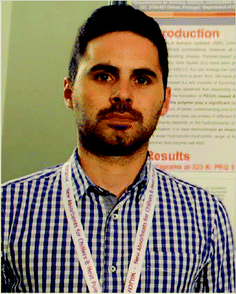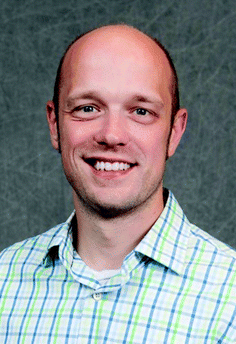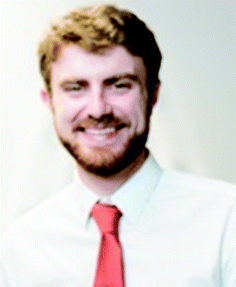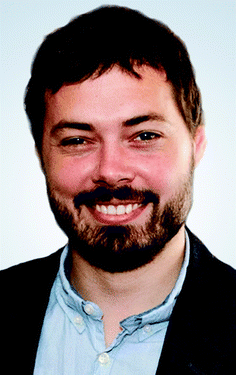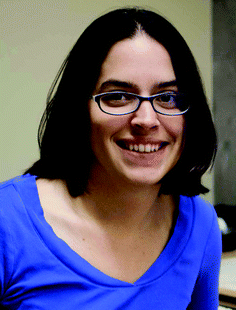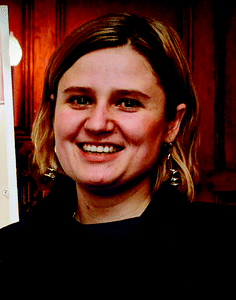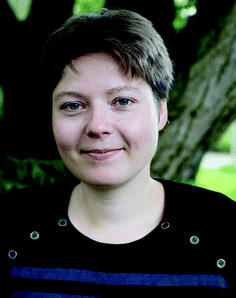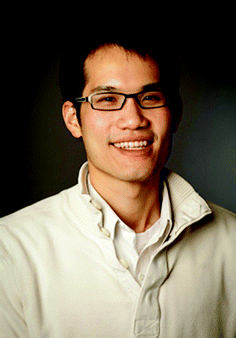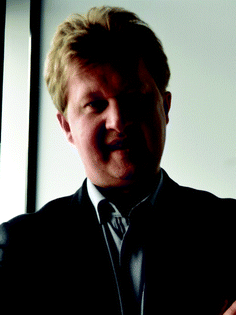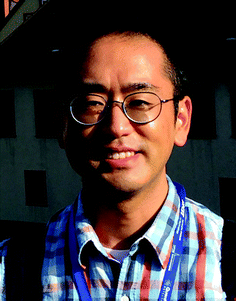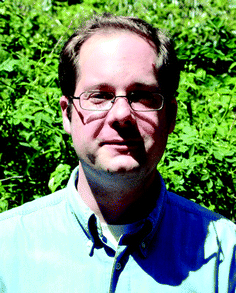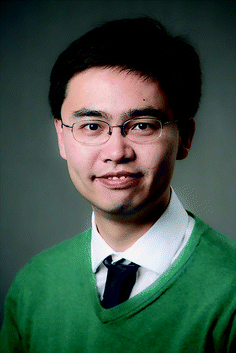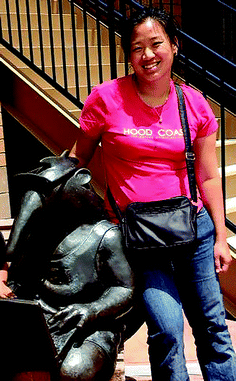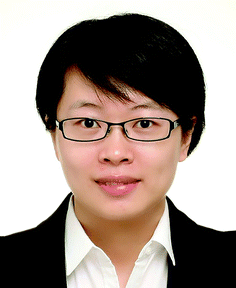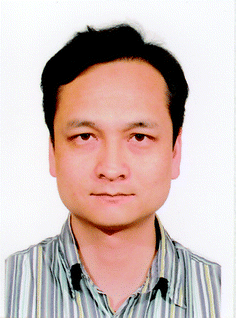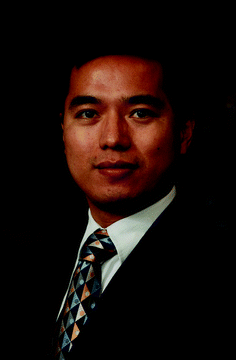DOI:
10.1039/C7CC90241G
(Profile)
Chem. Commun., 2017,
53, 7121-7134
Contributors to the Emerging Investigators issue 2017
Lorenzo Albertazzi is group leader at the Institute for Bioengineering of Catalonia, in Barcelona. He obtained his MSc in Chemistry and PhD in Biophysics from Scuola Normale Superiore (2011). After a short stay at the University of California, Santa Barbara he spent four years at the Eindhoven University of Technology as a postdoc. He moved to Barcelona in 2015 to start the Nanoscopy for Nanomedicine group. For most of his career he has been jumping between Chemistry and Biophysics: his group is now trying to combine them to achieve a molecular understanding of synthetic materials in the biological environment using advanced microscopies.
Ryan A. Altman received a BS from Creighton University and a PhD in Organic Chemistry from the Massachusetts Institute of Technology. After conducting postdoctoral training at the University of California, Irvine, Professor Altman started his independent career in the Department of Medicinal Chemistry at the University of Kansas. At KU, his group's expertise in organometallic, organofluorine, and physical organic chemistries enables direct exploration of intriguing questions at the interface of chemistry and biology. In addition to developing synthetic organofluorine methodology, the group is initiating projects aimed at enhancing distribution and metabolism properties of neurotherapeutic probes, and developing adjuvants that modulate bacterial resistance to antibiotics.
Rob Ameloot obtained his PhD at KU Leuven (Belgium) and was a Fulbright postdoctoral fellow at UC Berkeley (US). Currently, he is a tenure-track research professor at the KU Leuven Centre for Surface Chemistry and Catalysis. He was awarded an ERC starting grant to work on bringing microporous materials from the chemistry lab into the microelectronics lab by developing vapor phase thin film deposition routes. In general, he is passionate about pushing the envelope in porous materials and process technology, with a healthy disregard for traditional subject boundaries.
Trisha L. Andrew is an Assistant Professor of Chemistry and Director of the Wearable Electronics Lab at the at the University of Massachusetts Amherst. She started her independent career in 2012 at the University of Wisconsin-Madison, where she was an Assistant Professor of Chemistry and Electrical Engineering. Trisha is a David and Lucille Packard Foundation Fellow, an Air Force Young Investigator and a 3M Non-Tenured Faculty Award winner. Trisha was born in Saudi Arabia and grew up sampling life in India, Indonesia, Canada and Seattle, Washington, before finally finding her home in Boston, Massachusetts. She likes wearing bright colors and finds it fitting that her lab members work with organic dyes and textiles.
João M. Batista Jr. received a BS in Pharmacy-Biochemistry in 2007 from São Paulo State University – UNESP, Brazil, and a PhD in Chemistry from the same university in 2012. During 2009–2010 he was appointed Visiting Research Scholar at Syracuse University, USA. After receiving his PhD, he continued at UNESP, where he carried out postdoctoral research. He also worked as a Visiting Scientist at the University of Manchester in 2012–2013. In 2015, he joined the Federal University of São Carlos – UFSCar, Brazil, where he leads the first research group focused on Vibrational Optical Activity in South America.
James Blakemore has been an Assistant Professor of Chemistry at the University of Kansas, USA since January 2016. He studied at Yale with Gary Brudvig and Bob Crabtree for his PhD, and then at Caltech with Harry Gray as a postdoctoral scholar. In 2016, James served as a Discussion Leader at the Gordon Research Seminar on Solar Fuels in Italy and lectured on Lord Howe Island, Australia. He enjoys such travels—seeing the sights that sustainability research aims to protect—and also staying in the lab to mentor his new group.
Pedro H. C. Camargo received his PhD from Washington University in Saint Louis in 2009, working in the group of Prof. Younan Xia. He became an Assistant Professor at the University of Sao Paulo (Brazil) in 2011 and was promoted to Associate Professor in 2015. His interests include the synthesis of nanomaterials with controllable physicochemical features for catalysis and plasmonics. He serves as an Editor of the Journal of Materials Science and as an Associate Editor of the Journal of the Brazilian Chemical Society. In 2017, he became an affiliated member of the Brazilian Academy of Sciences.
Artur Ciesielski earned his MSc in Chemistry from the Adam Mickiewicz University (Poland) in 2007, and received his PhD at the Université de Strasbourg (France) in 2010. From there, he became a postdoctoral associate and, in 2016, became a research associate working at the Institute de Science et d’Ingénierie Supramoléculaire of CNRS & Université de Strasbourg, where he also habilitated in physical chemistry. His current research interests include the design of supramolecular systems, self-assembly of nanopatterns and formation of functional hybrids based on 2D materials by exploiting supramolecular approaches. In 2015 he received the Remarkable Young Pole in France award ‘Polonais remarquable en France’ from the Ambassador of the Republic of Poland in France.
François-Xavier Coudert is a CNRS researcher at Chimie ParisTech / PSL Research University, in Paris (France). His main research interests lie in the computational study of materials and interfaces, with specific focus on developing molecular simulations methods and statistical thermodynamics models to describe the adsorption of molecular fluids in zeolites, metal−organic frameworks, and other nanoporous materials. In particular, he loves flexibility, defects, disorder, and all entropy-related things. He doesn’t like: writing about himself in third person. See http://coudert.name/for further details, or follow him on Twitter: http://https://twitter.com/fxcoudert.
Tanja Cuk obtained her PhD in Applied Physics at Stanford University in 2007 with Zhi-Xun Shen, working on the photoemission spectra of superconducting (high-
Tc) copper-oxide perovskites. She then held a Miller Postdoctoral Fellowship at Berkeley from 2007 to 2010, where she worked with Heinz Frei on time-resolved spectroscopy of molecular transition metal-oxide complexes. In 2010, she received a joint faculty appointment between the Department of Chemistry at UC Berkeley and Lawrence Berkeley National Laboratory. Her research focuses on the fundamental mechanisms involved in converting charge into fuel, for which she applies multiple, time-resolved spectroscopies where, again, transition metal oxides and their spectra play prominent roles.
Mingji Dai received his BS from Peking University in 2002 under the guidance of Professors Zhen Yang and Jiahua Chen. In 2004, he went to Columbia University to pursue graduate study with Professor Samuel J. Danishefsky and earned his PhD in 2009. He then took a postdoctoral position in the laboratory of Professor Stuart L. Schreiber at Harvard University and the Broad Institute. In 2012, he began his independent career at the Chemistry Department of Purdue University. His lab currently focuses on the synthesis and biological study of complex natural products and other medicinally important molecules.
Tom F. A. de Greef obtained his PhD from the Eindhoven University of Technology (TU/e), The Netherlands in 2009 under the supervision of Prof. Dr E. W. Meijer and Prof. Dr R. Sijbesma in the area of supramolecular polymers. In 2010, he was appointed as an assistant professor at the TU/e where he was promoted to associate professor in 2016. In 2013, he was a visiting scholar in the group of Prof. D. Weitz at Harvard. His research interests include synthetic biology and DNA nanotechnology. He obtained several research grants such as an ERC Starting Grant and an NWO-VIDI grant and won the 2017 Cram Lehn Pedersen prize in supramolecular chemistry.
Peter Dedecker received his PhD in Chemistry from the KU Leuven, Belgium, in the group of Johan Hofkens. He then spent 6 years as a postdoc in the Hofkens group and in the group of Jin Zhang, Johns Hopkins University School of Medicine, Baltimore, MD, before returning to the KU Leuven as an assistant professor. Over his career he has worked in a range of fields, including spectroscopy, optics, biochemistry, and imaging. Since 2015 he has been the head of the Lab for Nanobiology at the KU Leuven, where his ERC-funded research focuses on the development of strategies, fluorophores, and instruments for the visualization of spatiotemporal heterogeneity in cellular processes.
Massimiliano (Max) Delferro is the Group Leader of the Catalysis Science Program in the Chemical Sciences and Engineering Division at the Argonne National Laboratory. He earned his BS and PhD in Inorganic Chemistry from the University of Parma under the supervision of Prof. Daniele Cauzzi. He then joined the group of Prof. Tobin Marks at Northwestern University, first as a postdoctoral fellow, then as a Research Professor of Chemistry. His research spans the synthesis and characterization of supported multimetallic single-site catalysts for C–H transformations to atomic layer deposition, and additives for tribological applications.
Patrick Z. El-Khoury received a BSc in chemistry from the American University of Beirut (2003-2006, advisor: B. R. Kaafarani), a PhD in photochemical sciences from Bowling Green State University (2006-2010, advisor: A. N. Tarnovsky), and postdoctoral training at the University of California, Irvine (2010-2012, advisor: V. A. Apkarian). Soon after, he joined Pacific Northwest National Laboratory (PNNL) as a Linus Pauling fellow (2013-2016). Patrick is currently a staff scientist at PNNL, working in the general area of ultrasensitive hyperspectral optical nanoscopy. In short, he interrogates (bio)molecules, plasmons, and their interactions.
Shane Ellis received his PhD in 2012 from the University of Wollongong (Australia) in the field of ambient ionisation mass spectrometry and lipid analysis. He completed his postdoc at FOM-AMOLF (Amsterdam), where he worked on pixelated detector development for mass spectrometry imaging (MSI). In 2014, he was appointed Assistant Professor at the Maastricht Multimodal Molecular Imaging Institute. His current research combines chemistry, physics, and biology for the development and application of innovative technologies for MSI, in order to unravel the molecular complexity observed in biology, and in particular the lipidome.
Mahesh Hariharan is an Associate Professor in the School of Chemistry, Indian Institute of Science Education and Research Thiruvananthapuram. He is a Fellow of the Royal Society of Chemistry and an associate editor for (i) Photochemical and Photobiological Sciences and (ii) RSC Advances. His research efforts primarily focus on understanding the interaction of light with biomolecules and crystalline organic materials. After completing doctoral research (2002–2006) with Dr Danaboyina Ramaiah from CSIR-NIIST Thiruvananthapuram, Prof. Hariharan carried out postdoctoral research (2007–2009) with Prof. Frederick D. Lewis at Northwestern University. Prof. Hariharan is the recipient of the Distinguished Lectureship Award from the Chemical Society of Japan (2017), the Asian and Oceanian Photochemistry Association Young Scientist Prize (2014) and the Kerala State Young Scientist Award (2013).
Corinna R. Hess grew up in Chicago, remained in the windy city for her undergraduate studies (University of Chicago), and then moved to sunnier climes for PhD studies at Caltech with Prof. Harry Gray. Postdoctoral positions with Prof. Judith Klinman (UC Berkeley) and Prof. Karl Wieghardt (MPI for Bioinorganic Chemistry) involved research at both ends of the bioinorganic chemistry spectrum, on metalloenzyme catalysis and late transition metal complexes coordinated by redox-active ligands. Corinna is now an Assistant Professor for Bioinorganic Chemistry at the Technical University of Munich. Her current research involves the design of catalysts for small molecule chemistry.
Artur Izmaylov received his MSc from Moscow State University in 2002 and PhD from Rice University in 2008. After a joint postdoctoral appointment at Yale University and Gaussian Inc., he joined the University of Toronto in 2012 as an Assistant Professor of Chemistry. The main efforts of his group are directed toward developing simulation techniques for quantum molecular dynamics involving multiple electronic states and applying them to investigate energy and charge transfer in molecules and nanostructures. As an independent researcher he has been awarded a Sloan Fellowship and an Early Researcher Award.
Grant E. Johnson is a scientist at Pacific Northwest National Laboratory (PNNL) leading development of mass spectrometry and ion soft landing for characterization and controlled preparation of cluster-based materials for catalysis and energy storage applications. He obtained his BS in chemistry from the University of Delaware in 2002 and PhD in chemistry from Pennsylvania State University in 2009 under Professor A. W. Castleman, Jr. He was the inaugural Linus Pauling Postdoctoral Fellow at PNNL from 2009 to 2012 working with Laboratory Fellow Dr. Julia Laskin. He received the Ronald L. Brodzinski Award for Early Career Exceptional Achievement at PNNL in 2015.
Martin Kampmann obtained his BA in Biochemistry from Cambridge University, and his PhD in Cell Biology/Biophysics from The Rockefeller University, where he worked with Dr Günter Blobel to characterize the architecture and dynamics of the Nuclear Pore Complex. As a postdoctoral fellow in Dr Jonathan Weissman's lab (UCSF), he spearheaded the development of genetic screening technology for mammalian cells. In his independent lab at UCSF and the Chan Zuckerberg Biohub, he is using this technology in combination with mechanistic biochemistry to uncover cellular mechanisms and therapeutic targets in human diseases, with a focus on neurodegeneration and cancer.
Deok-Ho Kim is currently an Assistant Professor in the Department of Bioengineering at the University of Washington. He received his PhD in Biomedical Engineering from Johns Hopkins University. His current research interests cover biomedical materials, tissue engineering, and cell mechanobiology. He has published over 140 peer reviewed journal articles and referenced conference proceedings, book chapters and patent applications, and given over 100 national and international invited lectures. Among the awards he has received are the Samsung Humantech Thesis Award, the Harold M. Weintraub Award in Biological Sciences, the American Heart Association National Scientist Development Award, and the BMES-CMBE Young Innovator Award.
Rebekka Klausen is an assistant professor at Johns Hopkins University in Baltimore, MD. She earned her PhD under the supervision of Dr Eric N. Jacobsen at Harvard University in 2011. After postdoctoral training with Dr Colin Nuckolls at Columbia University from 2011–2013, she started her independent career at JHU in the summer of 2013. She is a recipient of the Department of Energy Early Career Research Award (2015), the Petroleum Research Fund Doctoral New Investigator Award (2016), and the Sloan Research Fellowship (2017). Her research group focuses on the application of strategic synthesis to polymeric materials.
Takuya Kubo received his PhD from Kyoto Institute of Technology in 2004. He joined the Graduate School of Environmental Studies, Tohoku University as an assistant professor (2004–2012) and worked at the Department of Chemistry, Portland State University as a visiting professor (2010). He then joined the Graduate School of Engineering, Kyoto University as an associate professor (2012–). His research interests include the development of novel materials having molecular recognition ability for selective separation and functional porous materials for novel separation media.
Robert Langer received his PhD on the field of cluster science from the University of Karlsruhe (currently KIT) in 2009, under the supervision of Dieter Fenske. After a postdoctoral stay with David Milstein at the Weizmann Institute of Science in Rehovot, Israel, he joined the Philipps-University Marburg as an independent group leader. His research interests include basic aspects of coordination chemistry with relevance to homogeneous catalysis, such as novel reactivity patterns, hemilability, and unusual donor groups. A focus is on the development of 3d-metal-based (de)hydrogenation catalysts containing boron, carbon and nitrogen-based pincer ligands.
Chunju Li received his BS degree in 2002 and PhD degree in 2007 from Nankai University with Prof. Yu Liu. After a year as a group leader at the Sundia MediTech Company, Ltd, he joined Shanghai University in 2008. He was promoted to Associate Professor in 2010 and to Professor in 2015. From 2014 to 2015, Chunju was a postdoctoral fellow with Prof. Jonathan L. Sessler at The University of Texas at Austin. His current research is focused on biphen[
n]arene-based molecular recognition and self-assembly, and the design, synthesis and functional applications of novel macrocyclic hosts. In his spare time, he enjoys spending time with his family, drinking beer and playing basketball with his friends.
Chia-Yu Lin received his BS degree in Chemical Engineering from the National Cheng Kung University, Taiwan, in 2003. He received his MS and PhD degrees in Chemical Engineering from the National Taiwan University, Taiwan in 2005 and 2010, respectively. Thereafter, he joined the Christian Doppler Laboratory for Sustainable SynGas Chemistry, Department of Chemistry, University of Cambridge, United Kingdom, as a postdoctoral researcher from 2011 to 2013. Currently, he is an assistant professor in the Department of Chemical Engineering, National Cheng Kung University, Taiwan. His research focuses on synthesizing nanostructured inorganic materials in chemical sensors, electrocatalysis and photoelectrocatalysis.
Allen Liu obtained his PhD degree in biophysics in 2007 from UC-Berkeley. After conducting post-doctoral research in cell biology at The Scripps Research Institute, he started his research group in the Department of Mechanical Engineering at the University of Michigan in 2012. Through his training, he has been fascinated by the biochemistry and mechanics of biological membranes. The Liu group's current interests lie in the area of mechanobiology of membranes, drawing on approaches in systems biology, synthetic biology, cell mechanics, and microfluidics. He is particularly interested in assembling biological components to recapitulate complex emergent behaviors to understand the chemistry of life.
Matthew Ryen Lockett is an assistant professor in the Department of Chemistry at the University of North Carolina at Chapel Hill and a member of the Lineberger Comprehensive Cancer Center. He earned his BS in Chemistry from the University of Pittsburgh and his PhD in Chemistry from the University of Wisconsin at Madison under the guidance of Lloyd M. Smith. He was a postdoctoral fellow in the laboratory of George M. Whitesides at Harvard University, prior to joining the faculty at UNC in 2013. The Lockett group focuses on the development of 3D tumor and tissue models using paper-based scaffolds; and the preparation, chemical modification, and characterization of carbon-based photo-electrodes.
Satoshi Maeda received his PhD from Tohoku University in 2007. From 2007–2010, he was a JSPS research fellow at Tohoku University and the Toyota Physical and Chemical Research Institute. Between 2008–2009, he visited Emory University for a collaborative study. In 2010–2011, he was an assistant professor of the Hakubi project at Kyoto University. From 2012–2017, he worked at Hokkaido University – as an assistant professor until 2013, and then as an associate professor. Since 2017, he has been a full professor at Hokkaido University. His main research topic has been the development and application of automated reaction path search methods.
Smaranda C. Marinescu earned her bachelor's degree from the California Institute of Technology, and her PhD from the Massachusetts Institute of Technology, performing research under Prof. Richard R. Schrock. Following graduation, Marinescu undertook a National Science Foundation Center for Chemical Innovation postdoctoral fellowship at Caltech with Prof. Harry B. Gray. In 2013 she started her independent career as an assistant professor in Chemistry at the University of Southern California. Marinescu has been recognized through the Gabilan Assistant Professorship from Women in Science and Engineering, and the Zumberge Individual award from the Office of the Provost. Additionally, Marinescu is the recipient of the NSF CAREER award.
Brent Martin received his BS in Molecular Biology and PhD in Pharmacology at UC San Diego. As a graduate student with Roger Tsien, he advanced the biarsenical-tetracysteine labeling system for correlated light and electron microscopy. He then carried out postdoctoral studies with Benjamin Cravatt at the Scripps Research Institute, where he developed proteomics methods to profile dynamic protein lipidation, quantitative activity-based profiling, and new protein thioesterase inhibitors. Since joining the University of Michigan as an Assistant Professor, Dr Martin has established a series of independent research directions focused on protein modifications, bioconjugation chemistry, enzymology, and mass spectrometry.
Silvina Matysiak received her undergraduate degree from Instituto Tecnológico de Buenos Aires (2001), and completed her PhD studies at Rice University with Dr Cecilia Clementi (2007). After her postdoc at the University of Texas at Austin with Dr Peter Rossky (2007–2010), she joined the Fischell Department of Bioengineering at The University of Maryland as an Assistant Professor. Her research focuses on exploring how molecular behavior dictates macroscopic-scale properties of biomolecular systems, as well as characterizing the self-assembly of soft materials such as surfactants, proteins, lipids and polysaccharides. Her notable awards include the NSF CAREER and the ACS-PRF Awards.
Danilo Mustafa obtained his PhD in Physics at University of Campinas (Brazil, 2009) on the study of luminescent nanomaterials. Throughout this period, he entered the chemistry world with a six-month stay at TCU-Texas (USA, 2005). Afterwards, worked as an invited researcher at the Max Planck Institute-Stuttgart (Germany, 2009). In 2010, he joined KU Leuven (Belgium) to collaborate on the design of luminescent materials based on metal organic frameworks and layered double hydroxides. Since 2015, Danilo has been an assistant professor at the University of São Paulo (Brazil) where his research focuses on the fundamental understanding and application of new hybrid luminescent materials.
Ryuhei Nakamura received his PhD in Science in 2005 from Osaka University, where he studied photo-electrochemistry under the supervision of Prof. Yoshihiro Nakato. After working as a JSPS postdoctoral fellow with Dr Heinz Frei at the Lawrence Berkeley National Laboratory, he joined The University of Tokyo as an assistant professor and worked on electromicrobiology and electrocatalysis with Prof. Kazuhito Hashimoto. In 2013, he was appointed to Team Leader in the RIKEN Center for Sustainable Resource Science (CSRS). From 2017, he joined the Earth-Life Science Institute (ELSI) as a professor. His current research interests focus on integration of electrochemistry and geochemistry to exploit nature in order to develop novel systems and materials for the generation of renewable energy resources.
Yuta Nishina is an associate professor at Okayama University, Japan. He started his research in organic chemistry at Okayama University. During his PhD course, he joined research groups at MIT and Kobe University. He obtained his PhD in 2010, and started his academic carrier as an assistant professor at Okayama University, and was promoted to associate professor in 2014. In 2012, he started to use nanocarbons, especially graphene oxide, from a viewpoint of organic chemistry. He is involved in projects toward industrial production and practical application of graphene oxide and its composite materials.
Daniel Nomura is an associate professor in the Departments of Chemistry, Molecular and Cell Biology, and Nutritional Sciences and Toxicology at the University of California, Berkeley. He earned his PhD in Molecular Toxicology at UC Berkeley with Professor John Casida and was a postdoctoral fellow at The Scripps Research Institute with Benjamin Cravatt before returning to UC Berkeley as a faculty member in 2011. His honors include being a Searle Scholar and the recipient of the American Cancer Society Research Scholar Award. The Nomura Research Group is focused on mapping drivers of human disease using chemoproteomic and metabolomic platforms.
Keiji Numata earned his PhD (2007) with a thesis centered on enzymatic degradation and synthesis of biopolyesters in the laboratory of Prof. Yoshiharu Doi, Tokyo Institute of Technology. He worked at Tufts University, where he studied the biosynthesis of silk-based polymers
via bacterial pathways as well as silk-based polymers as gene carriers in the laboratory of Prof. David L. Kaplan. He moved to RIKEN in 2010 to start up the Laboratory for Enzyme Research and also to investigate the biosynthesis and material design of structural/functional polypeptides. He has been a Research Director of the JST-ERATO Numata Organellar Reaction Cluster Project since 2016.
Yuya Oaki is an Associate Professor of the Department of Applied Chemistry, Keio University, Japan. He received his PhD in 2006 from Keio University under the supervision of Prof. Hiroaki Imai. Then, he joined the group of Prof. Takashi Kato at The University of Tokyo as a JSPS postdoctoral fellow to study organic materials. In 2009, he moved back to Keio University. His current research interest is structure and morphology control of organic and inorganic polymer materials. He has worked as a Japan Science and Technology Agency (JST) PRESTO researcher from 2016 to study the application of materials informatics to materials chemistry.
Jorge F. B. Pereira received his PhD in 2013 from the University of Aveiro, Portugal, under the guidance of Dr João A. P. Coutinho. Afterwards, he joined Prof. Robin D. Rogers’ Group at The University of Alabama, USA, as a postdoctoral research fellow. In 2014, he started his independent career as professor at São Paulo State University, Brazil. His research focuses on the study of ionic-liquid based technologies for the purification of biopharmaceuticals and the development of biotechnological processes for the production and purification of added-value biomolecules. He received the Mário Quartin Graça scientific award for the best PhD thesis in the Technologies and Natural Sciences field.
Joshua Pierce obtained a BS with Honors in Chemistry from the University of Pittsburgh. Upon graduation, he continued with his graduate studies at Pitt under the direction of Professor Peter Wipf. After defending his thesis in the fall of 2008, Joshua moved across the country to begin Postdoctoral studies with Professor Dale Boger at The Scripps Research Institute. Since 2012 Professor Pierce's independent research at NC State explores cutting edge problems in natural products synthesis and organic methods development with a goal of exploring the biological function of natural product scaffolds and leveraging these studies for the development of therapeutic lead molecules.
David Charles Powers received his undergraduate education at Franklin and Marshall College. In 2006, he moved to Harvard University to pursue graduate studies with Professor Tobias Ritter and investigated the role of metal–metal redox cooperation in C–H oxidation catalysis. In 2011, Dave moved to the Massachusetts Institute of Technology as an NIH post-doctoral fellow with Professor Daniel Nocera, where he studied molecular photocataylsis for solar energy conversion. In 2015, he began his independent career at Texas A&M University. His research program is based on synthetic organic and inorganic chemistry with an emphasis on developing reaction chemistry for sustainable synthesis.
Jeffrey D. Rinehart began his career in magnetic materials by destroying the family computer monitor with a horseshoe magnet at age ten. After a brief twelve-year hiatus that included obtaining his BA in Chemistry (Cornell University, 2005), he resumed his work in magnetics under the guidance of Prof. Jeffrey Long at UC Berkeley. His PhD research focused on single-molecule magnetism in the f-elements, with an emphasis on uranium. In 2011, Jeff moved to the University of Washington as a postdoctoral scholar to learn magnetic spectroscopy techniques for studying nanomaterials. Since starting at UCSD, he has focused on materials that leverage both molecular design principles and the enhanced magnetic properties available at the nanoscale.
Jennifer L. Roizen is an Assistant Professor at Duke University and a 2017 Thieme Chemistry Journals Award recipient. She had her first taste of synthetic research with J. Hodge Markgraf and Tom Smith as a Williams College undergraduate. She moved to the California Institute of Technology to earn a PhD with Brian Stoltz, researching approaches to access the ineleganolide core. Upon graduation, Dr Roizen became an NIH postdoctoral researcher and CMAD fellow with Justin Du Bois at Stanford University, where they extended intermolecular amination technologies. Dr Roizen's laboratory researches total synthesis and the development of cross-coupling and atom transfer processes.
Natalia B. Shustova joined the faculty at the University of South Carolina in 2013. She received her MS degree in materials science from Moscow State University (MSU), Russia, a PhD degree in physical chemistry from MSU, and a PhD degree in inorganic chemistry from Colorado State University. She completed postdoctoral research at the Massachusetts Institute of Technology. Her current research interests include graphitic hybrid materials for sustainable energy conversion, sensors, and artificial biomimetic systems.
Anne Staubitz’s interests include unusual main group heterocycles and polymers, especially if their synthesis poses a challenge. After a post-doctoral period with Ian Manners (Bristol University), she moved to Kiel University in 2010 as an assistant professor, where she became fascinated by stimuli responsive materials. Since 2015, she has been a professor at Bremen University with an additional research professorship at Kiel University. She divides her time between these places, and these two very different fields of research. She enjoys working on interdisciplinary frontiers and understanding the research challenges in the areas of engineering, physics and biology.
Jin Suntivich is an assistant professor in the Department of Materials Science and Engineering at Cornell University. Jin received his BA in Integrated Science and BS in Materials Science and Engineering from Northwestern University. Afterward, Jin went on to obtain his Sc.D. in Materials Science and Engineering from MIT, where his research focused on finding a structure–property relation that controls the electrochemical activity of transition metal oxides and nanoparticles for fuel cells, electrolyzers, and metal–air batteries. Jin conducted his postdoctoral fellowship at the Harvard University Center for the Environment. There, he worked on understanding the light–matter interaction in titanium oxides and the role of non-equilibrium structure on the surface chemistry and the carrier lifetimes. His interest lies in developing rational strategies for designing new materials for energy and environmental applications.
Vladimir Torbeev received PhD degree in Chemistry from the University of Chicago under the direction of Prof. Stephen B. H. Kent for the work dedicated to total chemical synthesis and biophysical studies of HIV-1 protease. Then, he carried out postdoctoral studies with Prof. Donald Hilvert at ETH Zurich working on the molecular mechanism of misfolding and aggregation of β2-microglobulin. Since March 2014 he has been a group leader at Institut de Science et d’Ingénierie Supramoléculaires and an assistant professor at the University of Strasbourg. His current areas of research are intrinsically-disordered proteins, protein design and development of new approaches for chemical synthesis of protein libraries.
Ryan J. Trovitch received a BS in chemistry from King's College (PA) in 2004, and a PhD in inorganic chemistry from Cornell University in 2009. Shortly thereafter, he moved to Los Alamos National Laboratory as a postdoctoral research associate. Ryan joined Arizona State University's Department of Chemistry & Biochemistry (now the School of Molecular Sciences) as an assistant professor in 2012 and is currently working with his students to develop transition metal catalysts for energy- and sustainability-focused initiatives.
Yohei Uemara received a PhD degree from the University of Tokyo in 2010. He worked as a postdoc in the Photon Factory, KEK from 2010 to 2012 and the Institute for Catalysis (ICAT), Hokkaido University from 2012 to 2013. He has been working as an assistant professor in the Institute for Molecular Science since July 2013. His current research focuses on chemical kinetics and dynamics of photocatalysts based on time-resolved XAFS using short X-ray pulses in a synchrotron facility or an X-ray free electron laser.
Marc Walter studied at the TU Kaiserslautern. His PhD studies were carried out under the joint supervision of Helmut Sitzmann (TU Kaiserslautern) and Richard A. Andersen (UC Berkeley). From 2006–2010, he was a postdoctoral associate with Maurice Brookhart at UNC Chapel Hill. In 2010, he started his independent career at the TU Braunschweig (supported by an Emmy Noether fellowship of the German Research Foundation (DFG)). In 2014 he received the DFG Heinz Maier-Leibnitz Prize and the Wöhler-BASF Young Investigator Award of the inorganic subdivision of the Gesellschaft Deutscher Chemiker. Since 2015 he is also supported by a DFG Heisenberg fellowship. His research focuses on the activation and functionalization of small molecules using highly reactive organometallic compounds.
Xiaoji Xu grew up in Beijing, China. He received his BSc degree from Peking University in 2004 and PhD degree from the University of British Columbia in 2009. After postdoctoral fellow research at the University of Toronto, Xiaoji joined Lehigh University as an assistant professor in the Department of Chemistry in November 2014. His research combines scanning probe microscopy with laser spectroscopy to reveal the chemical and physical phenomena at the nanoscale. He also has a passion for developing tools for analytical chemistry, in particular, on aerosol characterizations with an aim of understanding the mechanisms of urban aerosol formations.
Jenny Y. Yang received her BS from UC Berkeley (Prof. Jeff Long), PhD from MIT (Prof. Dan Nocera), and performed her postdoc at PNNL (Dr. Daniel DuBois), where she subsequently worked as a scientist. Following a quick stint at the Joint Center for Artificial Photosynthesis at Caltech, she started at UC Irvine in 2013. She finds her interest in formate fitting since UC Irvine’s mascot is the giant anteater, which doesn’t produce stomach acid - it uses formic acid from its primary food source. When she’s not at work, she likes to spend days (and nights) in the wilderness.
Dan Yuan obtained her PhD degree in 2012 from National University of Singapore (NUS) under the supervision of Professor Han Vinh Huynh, and worked on complexes of N-heterocyclic carbene ligands. After working as Research Assistant at NUS for one year, she returned to China in 2013, and joined Soochow University as Assistant Professor. Her research interests include the development of early transition metal complexes and their application in atom-economic transformations.
Xin Zhao grew up in Yunnan, China. He received his BS in 1994 from Beijing Normal University and PhD in 2003 from the Shanghai Institute of Organic Chemistry (SIOC), Chinese Academy of Sciences. After postdoctoral studies at Harvard University and the University of Chicago, he joined the faculty team of SIOC from May 2008. He is currently a professor in the Key Laboratory of Synthetic and Self-Assembly Chemistry for Organic Functional Molecules. His research interests include self-assembly, porous organic materials, and physical organic chemistry.
Yuebing Zheng joined the University of Texas at Austin as an assistant professor of Mechanical Engineering and Materials Science and Engineering in 2013. He did his postdoctoral research with Prof. Paul S. Weiss at the University of California, Los Angeles from 2010 to 2013. He received his PhD from Pennsylvania State University under the guidance of Prof. Tony Jun Huang in 2010. His group exploits the synergy among nanophotonics, microfluidics, and colloid and surface chemistry to innovate optical nanotechnologies. Current research projects range from advancing the fundamental understanding of light-matter interactions at the nanoscale to developing and applying optically active materials and devices.
|
| This journal is © The Royal Society of Chemistry 2017 |

